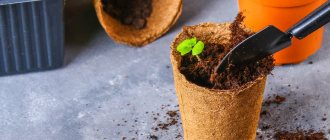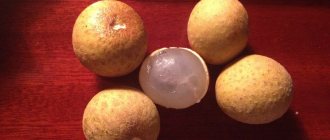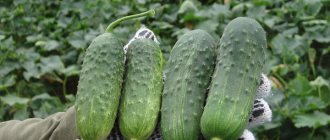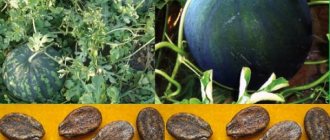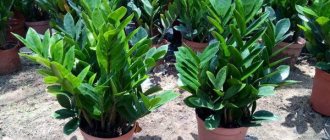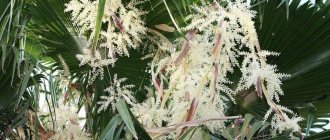Optimal growing conditions
Citrus trees at home react more painfully than other plants to changes in location, so you can’t go wrong with it. Coming to us from the tropics, they need constant warmth, fairly high humidity and daylight hours of at least 12 hours. As a rule, indoor citrus plants are placed on the lightest windowsill, but on the south side they will have to be protected from the too aggressive summer sun in the middle of the day. And from mid-autumn to mid-spring you will need to turn on a special lamp to lengthen the daylight hours.
For comfortable growth of citrus plants, the air temperature should be between +18 and +28 degrees. They will begin to bloom at a temperature of + 18 degrees, and the fruits will ripen when it rises to 24 degrees. The air should not be colder than +12 degrees under any circumstances, and sudden changes in temperature can lead to leaf fall. It is desirable that daily temperature fluctuations should be no more than 5 degrees.
Caring for citrus trees at home involves creating conditions as close as possible to their native ones, and in the tropics, as you know, it is not only warm, but also humid. A comfortable humidity level for actively growing trees should be 60–70 percent. The winter dormancy period involves a decrease in humidity levels to 55–60 percent, and air temperatures to +12–+16 degrees. At the same time, daylight hours cannot be reduced.
Citrus fruits are cared for all year round, but for the plants to fully develop and produce fruit, it is necessary to organize a period of relative rest, when all processes proceed much more slowly. Wintering begins in November and lasts until mid-February, when the sun becomes more active after winter, the amount of heat and light increases. Caring for tropical citrus indoor plants in winter is characterized by the absence of fertilizing and less frequent watering. The air temperature must drop much more than the humidity level; this can be difficult to achieve in apartments with central heating. Some people simply move trees onto insulated verandas or loggias, while others try to isolate the plant area from heating devices using a film stretched along the windowsill or an additional window frame installed.
The humidity level is maintained using a home humidifier or simply frequent spraying; a container of water is placed next to the pots for constant evaporation. It is very important to properly water the citrus plants in your home. The main secrets of caring for citrus fruits at home are to not let the soil dry out. Citrus trees should be watered frequently in summer and rarely in winter, but this should not be done unevenly. The soil should always be moist; it’s just that in summer, high air temperatures and active plant growth increase moisture consumption, and in winter, coolness and slower life processes reduce the need for water. So in winter you can water once every 2-3 weeks, and in summer - every day, but the optimal frequency depends on many factors; it is advisable to check the condition of the soil and not let it dry out.
In the summer, trees are often taken out into the fresh air, which they usually like. Here it is important to monitor the temperature so that acclimatization is easy, and it is better to bury the pot in the ground, this will protect it from overheating, otherwise the roots may heat up more than the crown, which is unacceptable.
Fortunella (kumquat)
In nature, Fortunella grows in the subtropics of Asia, but due to a number of beneficial properties it has gained enormous popularity in the agriculture of southern Europe, Australia and the southern states of the USA. For example, they love to grow it in Greece and Montenegro. Thanks to its compact size, decorativeness, rapid growth and fruiting, Fortunella has also become a very popular indoor plant - of all citrus fruits, it is the most convenient and profitable to grow at home.
Fortunella is usually sold in flower centers in the form of neat bushes and small trees, completely covered with small fruits, which are a real storehouse of health-promoting vitamins, minerals and antioxidants. Small, elongated, sweet and sour fruits are eaten with a thin peel, due to which their vitamin value is many times higher than other citrus fruits. In addition to being consumed fresh, Fortunella fruits are wonderfully processed: they are used to make sweet candied fruits, delicious jams and marmalades, and aromatic liqueurs.
Pruning and crown formation
Young plants need crown formation, so before the start of the period of intensive growth (mid-February), their shoots are pruned. If a citrus grows from a seed at home, then in the first year of life it usually reaches a height of 25–30 cm. Pinching the top bud will slow down upward growth and activate the side buds. Then you need to form skeletal branches, for which several are selected from the side shoots and the rest are cut off. The skeletal branches are gradually strengthened, they are shortened in order to force them to branch and form as many small fruit branches as possible.
When the basic shape of the crown has already been established, annual pruning comes down to removing broken or disease-affected branches, growing in the middle of the shoots, and fattening branches. In spring and even summer, branches are usually shortened, stimulating the formation of fruits or simply maintaining the shape of the crown. This is the general scheme of crown formation, but all crops grow in their own way, which means they need an individual approach.
Lemon does not like to branch; no amount of pinching or shortening the branches will make it form many small shoots; you will have to tinker with it to form a compact round tree from it. It usually looks angular, its crown consists of several large shoots, and is well penetrated by air and light.
Orange is distinguished by its tendency to reach the ceiling; it always grows upward, so orange trees have to shorten the trunk and main branches every year. Mandarin constantly forms many new branches; you have to cut them out to prevent the crown from thickening. The least hassle with the crown occurs when growing kumquat and calamondin. They are not so common among lovers of exotic plants, although they always have a very attractive appearance, and caring for them is somewhat easier.
Pruning should always be done with sharp, clean tools to avoid the risk of infection and to injure the shoots as little as possible. The branches are cut above the bud located outside the crown so that the new shoot is not directed into the tree, but away from the center of its crown.
Orange
It is best to take seeds for cultivation from fully ripened fruits, round in shape. The seeds are washed in warm water and soaked overnight. After this, you can plant it in the ground to a depth of 1-1.5 cm. Popular varieties for home growing:
- Korolek
- Citrus aurantium
- Washington Nevile
- Pavlovsky
The pot for planting should have enough holes, do not forget to provide drainage. Place the pot with the seed in a warm place and create a greenhouse effect. After the first leaves appear, move the pot to the sun. Take a small pot for replanting, since a young orange has almost no roots, it can turn sour in a large container.
Remember, orange loves bright rooms, but not direct sunlight. It is better to avoid drafts. The humidity in the room should be about 40 degrees. Keep an eye on this during the heating season. The plant may die from dry air. For watering, do not use chlorinated water, try not to flood the seedling.
If you follow these rules, the plant will not die and will soon begin to delight you with its flowering. Fertilize once every 2-3 weeks. Be patient and in a few years the plant will definitely delight you with its delicious fruits. And the joy of growing them yourself will make them even more aromatic and tastier.
As you have seen, growing citrus fruits at home is not so difficult; the main thing is to pay attention to the condition of your tree in a timely manner, take careful care and treat the plants with love. The result will definitely please you!
Conditions for germinating orange seeds
Episcia - home care and plant varieties
The optimal time for sowing oranges is the end of winter or the beginning of spring. By the time the sprouts appear, the daylight hours will increase and will promote rapid growth. To germinate a seed, you need to take into account the following basic points:
- The room temperature should not be lower than +18 degrees.
- It is important to protect the pot from drafts and cold glass on the windowsill.
- After the first leaves appear, the sprout needs a lot of diffused light.
- When germination, it is important to maintain an optimal humidity level - not lower than 40%.
Stages of germinating an orange seed
The first stage is washing the seeds and soaking them for a day in water with the addition of any root growth stimulants. At the second stage, the seeds are sown in separate pots or in a common box. The distance between seeds should be at least 5 cm.
Note! When the sprouts have 4-6 true leaves, they will be ready to be planted in individual pots and changed to a more nutritious substrate.
Small seedlings must be protected from drafts, cold, and temperature changes. After the sprouts appear, the orange needs a lot of light. An important growth factor to remember is the same temperature both in and around the pot.
For the first planting, you need a mixture of peat and sand in equal quantities. Once active growth begins, you will need a mixture similar to that for adult citrus plants.
A pot for one seed is suitable with a volume of no more than 100 ml. It must have a drainage layer and at least 3 holes in the bottom. With each subsequent transfer of an orange, you should take a pot 3 cm larger in diameter.
The underdeveloped root system of a seedling sprout is not capable of actively absorbing water, so overwatering will lead to rotting of the sprout. The seed will die from lack of moisture. Regular watering in small quantities is required.
Rules for transplanting lemons
Care at home includes regular replanting; young plants are replanted annually, and adults - after 3-4 years. This is due to root growth and lack of nutrition from a small pot. Young plants intensively grow roots; if they are not replanted in time, the roots will not only entwine the earthen ball, but will try to pierce the drainage layer and get out. If planted correctly, there should be at least 1 cm of soil between the roots and the walls of the pot. Therefore, fast-growing young lemons (as well as all other citrus fruits) are replanted more often, and almost grown adult trees are replanted less frequently.
For each subsequent replanting, take a container several centimeters larger in width and height than the one from which the roots are extracted. The peculiarity of citrus crops is the complete absence of root hairs; their role (absorption of moisture and nutrients) is performed by a symbiote - a fungus, which forms mycorrhiza. It suffers from sudden changes in temperature, lack of moisture or air, or cramped conditions. Therefore, the soil needs to be replaced more often, but replanting must be done very carefully so that the mycorrhiza is not damaged, as this will lead to its death, which means the entire plant will die.
The only way to transplant a lemon is to carefully transfer the entire earthen lump into a new container. First, you need to water it generously, then tap the pot on all sides, turn it over, remove the roots along with all the soil, carefully clean off the drainage layer if it is attached too tightly, and then place the entire earthen ball with roots in a new bowl with an organized bottom with a drainage layer sprinkled with new soil. Then carefully fill all the voids on the sides with new nutrient soil.
The roots are washed, freeing them from the soil, only in case of disease; this procedure is very dangerous, since the vulnerable mycorrhiza should be exposed. By the way, it is better to use clay pots for growing citrus fruits, since clay allows air to pass through and regulates humidity - it absorbs excess water when the soil becomes waterlogged, and then gradually releases it when the soil dries out.
Mandarin
The tangerine tree can also be grown using seeds or cuttings. For planting, choose hybrid varieties; they sprout earlier and bloom faster.
The main varieties of tangerines for growing at home:
- Vasho
- Clementine
- Unshiu latifolia
The most common climate for a tangerine tree is tropical, subtropical, so you will have to provide it with similar conditions. This can be achieved through humidity, light and high temperature. There should be high humidity both in the soil and in the air. Pay attention to the equipment of a suitable place for the plant tub. Mandarin does not tolerate the presence of pathogens and mold. It is necessary to water the plant only when it is slightly dry. In hot weather, try to water the tree more often, perhaps even several times a day, and be sure to spray the leaves. If the sun is shining brightly, shade the plant a little. Remember that the plant cannot be left in a draft, it does not like it.
The process of seed germination itself is similar to lemon; the sprout appears within 2-3 weeks. After 4 leaves appear on the sprout, the seedlings are transplanted into separate pots. Young tangerines are replanted once a year, usually in spring. After reaching 10 years of age, the tree is left alone, only renewing the upper substrate.
How to protect a tree from diseases and pests
If you create comfortable conditions for plants and properly care for them, they will grow healthy and strong, they will be able to resist attacks from pests and not react to pathogens. But you need to be aware of the possible risks.
Fungal diseases rarely bother indoor citrus fruits; they are more common in large greenhouses. This can be powdery mildew, anthracnose, leaf spot, gum disease, and they should be combated using fungicides. At home, you may encounter a sooty fungus, which in itself does not cause harm, but indicates infestation by pests that produce sweet nectar. It is enough to drive away the aphids, wipe the leaves with a cotton swab dipped in a soap solution, and wash with water.
Viruses such as mosaic, for example, cannot be treated, alas.
A change in leaf color often indicates not a disease, but a lack of certain elements. Leaves turn yellow due to a lack of iron, magnesium, sulfur, nitrogen or excess calcium, or disturbances in the light regime. Brown spots can appear due to sunburn or a large dose of fertilizers, or violations of the watering regime.
Aphids, spider mites, scale insects, false scale insects, mealybugs - these are pests that can attack a citrus tree even in an apartment. It is advisable to inspect your plants more often in order to know exactly about their condition; you need to control the reverse sides of the leaves, this is where the first traces of pest damage often appear.
Thus, the appearance of sweet discharge, the accumulation of very small dots (green or black, brown) on the tops of young shoots indicates an aphid attack. A powdery coating on the underside of the leaves, yellowish dots on the upper side, and then cobwebs - this means that a spider mite has appeared on the plant. If white lumps appear on the branches or in the axils of the leaves, these are traces of mealybugs. If a scale insect or false scale insect encroaches on your plant, then sweet discharge and small growths resembling droplets of wax will appear on the trunk, branches, and leaves.
If there are small numbers of insects (if noticed in time), they can be washed off with a stream of water or collected with a damp cotton swab. Regular showering can get rid of them. If this measure is not enough, you can treat the plant several times with a soap-ash solution or, as a last resort, with special products purchased in the store.
The effect of pinching on growth
Fruiting highly depends on the correct pinching. After the next ripening occurs, rapid growth of citrus buds begins: the upper ones always grow and develop faster than the lower ones; vertical shoots are ahead of horizontal ones. This creates certain difficulties when trying to form the correct crown of a tree. In order for the shoots to grow in the desired direction, you need to carefully monitor the awakened buds and pinch them as necessary.
When a plant is properly formed, it not only grows better, but it is also pleasant to look at.
Indoor lemon blooms faster with strong branching. Fruiting will be delayed if you decide to shape the crown according to the type of rod. Flowers usually appear on branches of the fourth order; their number reaches its maximum at the seventh order. This way you can speed up flowering. However, it is not always necessary to bring fruiting closer; if the seedling is sick or not grafted, the height of the plant must be adjusted, the first flowering should be delayed. Lemons and oranges can only be allowed to bloom when the young tree reaches 3-4 years old, and only if the plant is in good condition.
The shoots are cut shorter when the pot is on a regular windowsill; in the presence of a large window, they maintain a greater length of branches. Taking a closer look, you will notice that there are a lot of buds on the citrus tree, which can awaken when some part of the crown dries out or is pruned.
The soil
The soil for citrus plants should show a neutral or slightly acidic reaction, be breathable and nutritious. In the store you can purchase ready-made Lemon soil that meets all requirements.
To prepare the substrate yourself, mix equal parts of high-moor peat, soddy oak or field clover soil, sand, well-rotted manure, with the addition of wood ash. The soil must be disinfected from weed seeds and pest larvae by roasting over a fire or in an oven, or steaming in a water bath.
Choose a pot for citrus that is wide and medium in height. It is better to take a ceramic, heavy pot so that it is stable and does not tip over. The presence of holes in the bottom to drain excess water is mandatory.
Citrus pot
Fertilizing in winter
If you left your lemon to winter at a temperature of 8-15 degrees and without additional lighting, then it does not need feeding at all. After all, abundantly feeding a tree that is in dormant mode can only provoke the appearance of diseases and acidification of the soil. Just water it moderately from time to time.
When the tree “rests” in a warm room, the temperature of which is above +20 degrees, then from October to February it will need foliar feeding. It should be done once a month and not more often. During this period, a ready-made special mineral fertilizer for citrus fruits is ideal. You can also alternate spraying along the crown with root feeding.

